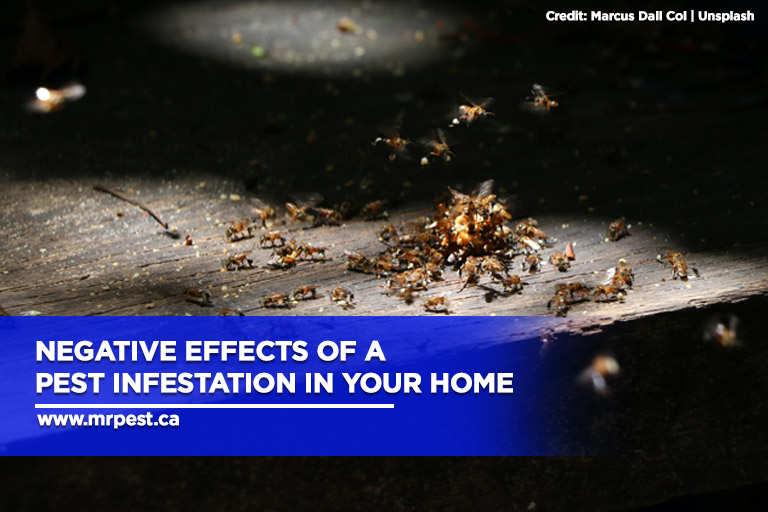Not known Incorrect Statements About Eco Bed Bug Exterminators Dc
Table of ContentsThe Definitive Guide for Eco Bed Bug Exterminators DcThe Main Principles Of Eco Bed Bug Exterminators Dc Eco Bed Bug Exterminators Dc Things To Know Before You Get This9 Easy Facts About Eco Bed Bug Exterminators Dc ExplainedNot known Factual Statements About Eco Bed Bug Exterminators Dc
Due to the fact that pesticides are toxic, they are also possibly harmful to people, animals, various other microorganisms, and the atmosphere. People that use pesticides or regularly come in call with them have to understand the relative toxicity, prospective health and wellness results, and preventative steps to reduce direct exposure to the items they utilize. Risk, or risk, of using chemicals is the potential for injury, or the degree of threat involved in making use of a pesticide under a provided collection of conditions.
Applicators can lessen or almost eliminate direct exposure-- and thus decrease hazard-- by adhering to the label instructions, using individual safety clothes and equipment (PPE), and taking care of the chemical properly. More than 95 percent of all pesticide direct exposures come from dermal exposure, largely to the hands and forearms. By wearing a pair of unlined, chemical-resistant gloves, this kind of exposure can be virtually eliminated.
The dangerous results that occur from a solitary direct exposure by any path of access are described "severe effects." The 4 courses of exposure are facial (skin), inhalation (lungs), dental (mouth), and the eyes. Intense poisoning is figured out by analyzing the facial toxicity, inhalation poisoning, and oral poisoning of test pets.
The Best Strategy To Use For Eco Bed Bug Exterminators Dc
Intense toxicity is determined as the amount or concentration of a toxicant-- the a.i.-- needed to eliminate 50 percent of the pets in a test population. This step is typically expressed as the LD50 (dangerous dosage 50) or the LC50 (deadly concentration 50). Furthermore, the LD50 and LC50 worths are based on a solitary dose and are tape-recorded in milligrams of chemical per kilogram of body weight (mg/kg) of the guinea pig or in components per million (ppm).
The lower the LD50 or LC50 worth of a chemical product, the better its toxicity to people and pets. Pesticides with a high LD50 are the least harmful to human beings if utilized according to the instructions on the item label. The persistent poisoning of a pesticide is determined by subjecting guinea pig to lasting direct exposure to the energetic component.
The persistent toxicity of a chemical is much more difficult than intense toxicity to establish via laboratory evaluation. Products are classified on the basis of their relative severe poisoning (their LD50 or LC50 worths). Chemicals that are identified as very hazardous (Toxicity Category I) on the basis of either oral, dermal, or breathing poisoning should have the signal words DANGER and poisonous substance published in red with a head and crossbones sign prominently showed on the front panel of the package tag.
The severe (solitary dosage) oral LD50 for pesticide products in this team varies from a trace total up to 50 mg/kg. Exposure of a few decreases of a product taken orally could be deadly to a 150-pound individual. https://www.domestika.org/en/ecobedbug3xt. Some chemical products have simply the signal word threat, which tells you absolutely nothing regarding the intense toxicity, just that the item can trigger serious eye damages or serious skin inflammation
The Basic Principles Of Eco Bed Bug Exterminators Dc
In this group, the severe oral LD50 varieties from 50 to 500 mg/kg. A teaspoon to an ounce of this product might be deadly to a 150-pound person (bed bug heat treatment). Chemical items identified as either somewhat harmful or relatively harmless (Toxicity Classifications III and IV) are called for to have the signal word care on the chemical tag

All pesticide toxicity valuesPoisoning including the LD50, can be found on discovered product's Item Safety Product Safety and security (MSDS). Chemical labels and MSDS can be acquired from sellers or makes - https://ecobedbug3xt.wordpress.com/2024/03/20/eco-bed-bug-exterminators-dc-your-ultimate-solution-for-bed-bug-treatment/. The signs of chemical poisoning can range from a moderate skin irritability to coma or also fatality.
Due to the fact that of potential health and wellness problems, pesticide individuals and handlers need to identify the usual indicators and signs and symptoms of pesticide poisoning. The results, or signs, of chemical poisoning can be extensively specified as either topical or systemic.
Eco Bed Bug Exterminators Dc Things To Know Before You Get This
Dermatitis, or inflammation of the skin, is approved as the most frequently reported topical impact associated with pesticide direct exposure. Some individuals have a tendency to cough, wheeze, or sneeze when exposed to pesticide sprays.
This signs and symptom usually subsides within a couple of mins after a person is eliminated from the direct exposure to the irritant. Nonetheless, a reaction to a pesticide item that causes somebody not just to sneeze and cough however additionally to create extreme intense respiratory system signs is more probable to be a true hypersensitivity or sensitive reaction.
Systemic effects are rather various from topical effects. They commonly take place away from the initial factor of get in touch with as an outcome of the pesticide being absorbed into and dispersed throughout the body. Systemic effects frequently include nausea, vomiting, exhaustion, headache, and digestive disorders. In innovative poisoning instances, the individual may experience modifications in heart rate, problem breathing, convulsions, and coma, which could bring about death.